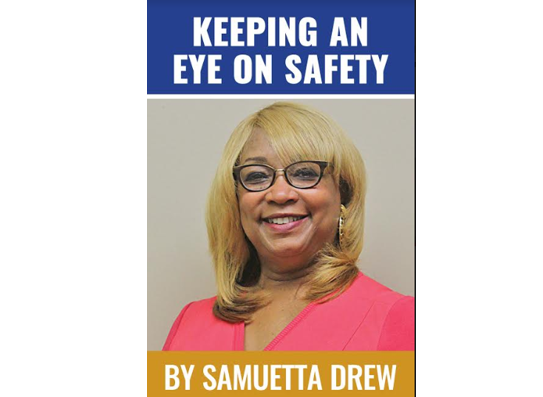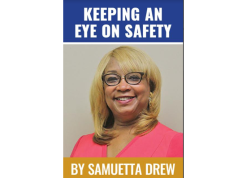By Samuetta Hill Drew
Last week the article discussed how riding on a school bus is usually safe, but the loading and unloading process could potentially be very dangerous. The loading and unloading process happens around the perimeter of the bus which is called the “Danger Zone’ because students can’t always be directly seen, placing them at risk. This “Danger Zone” area (the invisible rectangle stretching 10 feet all around the bus) prompted the industry to create safety devices which continue to be used today such as stop arms, amber and red warning lights, strobes, driver LED alert signage and the actual color of the school bus – neon yellow.
Yet pedestrian fatalities when loading and unloading the school buses still account for approximately three times as many school bus-related fatalities especially when compared to school bus occupant fatalities. This is a topic which warrants putting safety measures in place and practicing them regularly by the bus drivers, parents and students.
An orientation should be held at least twice a year, at the beginning of each semester especially for younger and new school bus riders. Show the students the 10-foot perimeter around the bus called the “Danger Zone” so they will have a clear understanding where they need to stand to be safe. A good rule of thumb is to stay at least five giant steps away from the bus.
Also conduct a short yet crucial demonstration by allowing a few students to sit in the driver’s seat so they can witness the often zero visibility the driver has at various given points. Students should be instructed not to walk in front or behind the bus. These are two of the worst blind spot areas for the bus driver. This orientation can be conducted by either a district employee, bus driver or a concerned parent (for his/her child).
Most school districts attempt to schedule bus stops in locations where students do not have to cross the street, but occasionally the stops will require the students to cross the street. With this in mind, conduct a drill on why and how looking both ways at the edge of the bus before crossing is critical for all ages, especially in the age of the iPhone, tablets, headsets, video games, etc.
Students should always look to the right before they exit the bus. Parents should park to drop off or pick up their child on the same side of the school bus stop location with the vehicle facing in the same direction as the bus. This is true for all ages, but especially for the young ones to help prevent them from getting hit while crossing the street.
Make sure there is a left/lost item retrieval rule in place. Many students drop things or forget them. There needs to be a standing practice that if a child leaves something or drops something on the bus they notify the bus driver immediately. They should never bend down inside the “Danger Zone” to retrieve any item without the bus driver being fully aware of their presence.
Also, students and the driver need to be aware if any type of bookbag strap or article of clothing is caught in the door. It’s a great safety practice if the bus driver will do a headcount at each drop off and pick up location. This way he/she will be cautious to make sure no child is in their blind spot.
As a motorist, know it is illegal in all 50 states to pass a school bus. Also be aware of the flashing lights signals on a bus. Yellow flashing lights indicate the bus is about to stop to load or unload. So, the motorist needs to slow down. When the flashing light is red it means the bus is about to stop and children will be getting on or off. ALL MOTORISTS MUST STOP THEIR CARS without exception! Also, when driving watch out for children walking on a road/street with no sidewalks.
When is comes to school bus overall safety, make sure you Keep an Eye on Safety at all times because children can be unpredictable at times!





